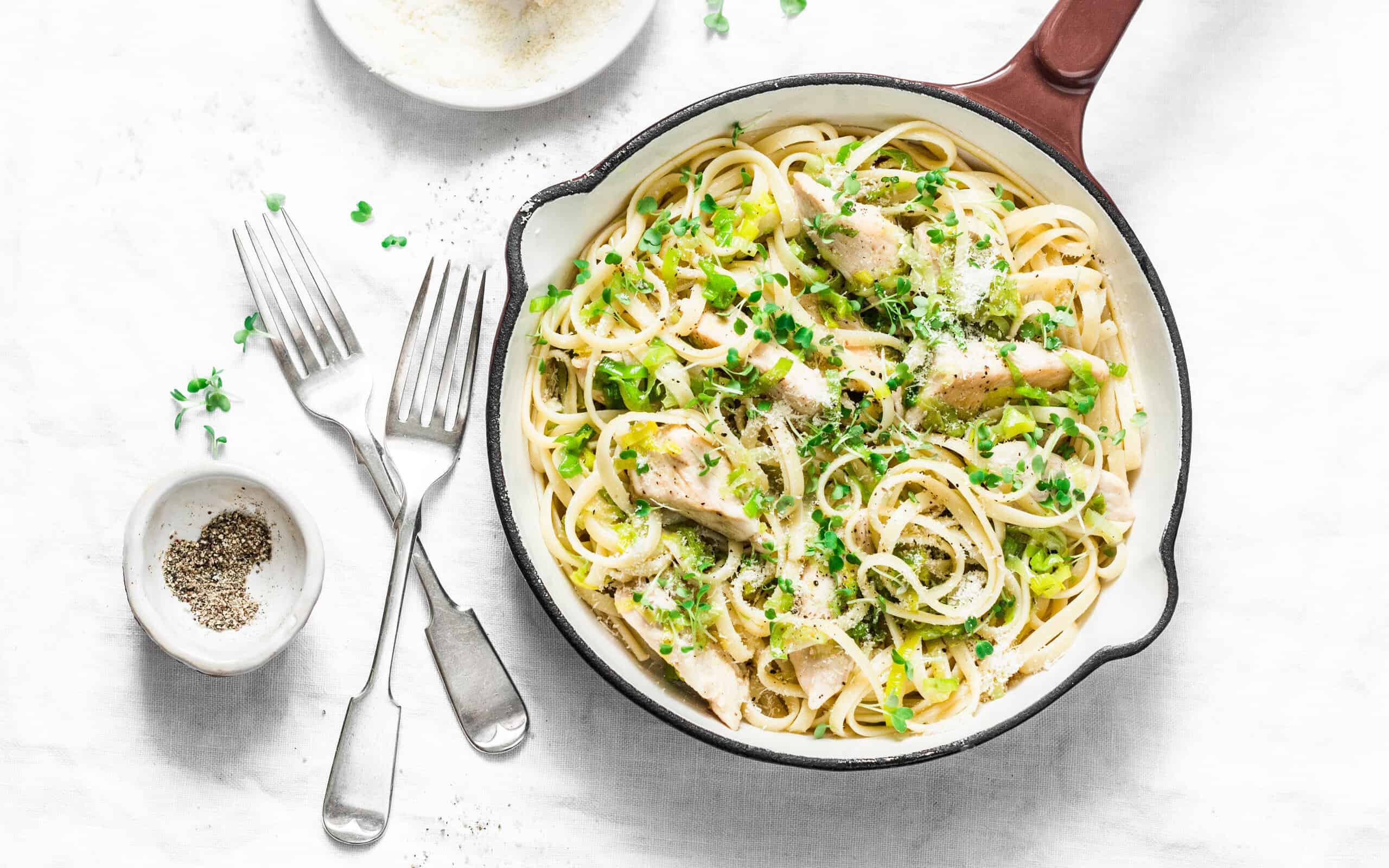Trying to pick between fettuccine vs. linguine noodles as the base for your next meal? The two pasta types do look quite similar, however, don’t let their appearance fool you. These two noodles are quite different. Fettuccine is a long, dense noodle that is often paired with heavy, meatier sauces. Linguine noodles are also flat but more narrow and are considered more delicate when cooking. These noodles are usually used in dishes with lighter sauces. Think red sauce or pesto! While both options are delicious, they do have their particular uses, let’s get into it!
In this post, we’ll discuss the history of each pasta type and how they are commonly known. You’ll learn about the best methods for cooking them and how to make them your own. By the end of this, a trip down the pasta aisle won’t feel like a chore. You’ll know exactly which noodle to pick in the quandary of fettuccine vs. linguine noodles.
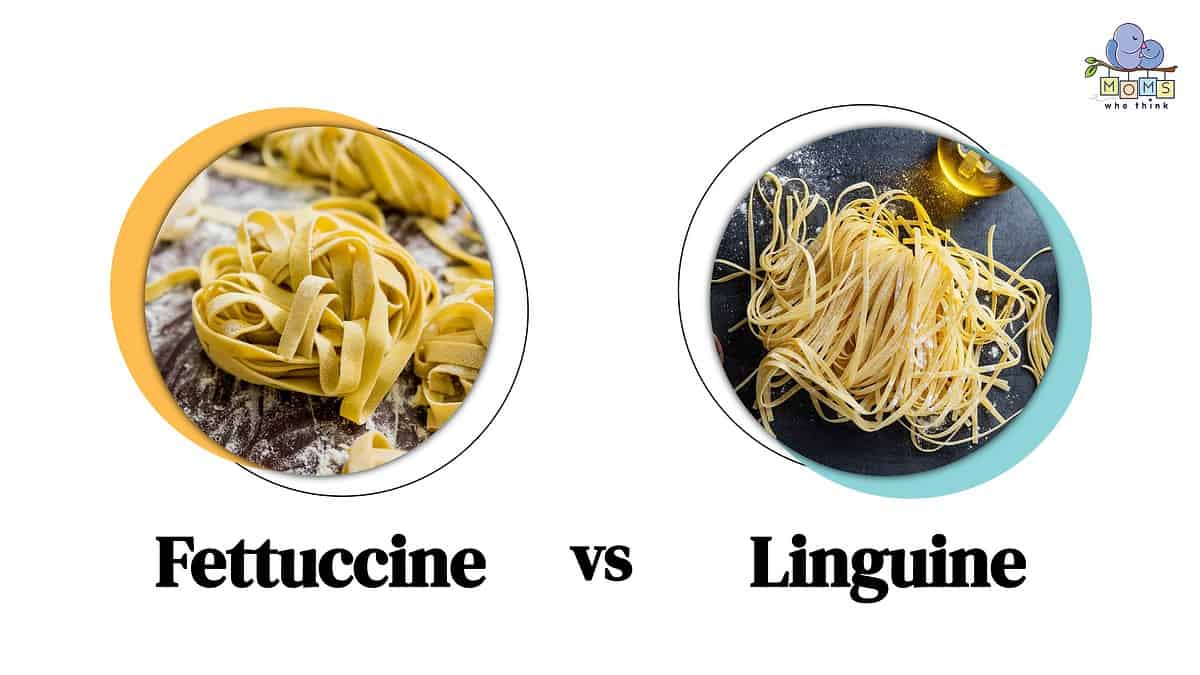
©
Fettuccine vs. Linguine Noodles: How Are They Different?
The main difference between fettuccine and linguine noodles is their width. Fettuccine is wider at 1/4 inch, while linguine is narrower at about 1/8 inch wide.
In addition, there are ingredient differences. Fettuccine is often made from egg and flour, which gives it a hearty texture that's ideal for robust sauces like Alfredo or meat sauces. In comparison, linguine is traditionally made from just water and flour. Its small size and delicate nature make it more ideal for lighter sauces that pair well with seafood.
Let's dive into each of these noodles in more detail.
What is Fettuccine?
Fettuccine is a wheat flour-based pasta type that is long and wide. It is a hearty pasta that goes well with thicker sauces and heavier ingredients. Add protein or meat sauces to your fettuccine noodles for a steamy and delicious starch-filled meal. How did fettuccine become so popular in these kinds of dishes?
History And Origin
Pasta noodles have a rather confusing history. Mostly in that, it's hard to pinpoint their origin. Pasta has roots in Asian cooking, as well as in ancient Rome and Italy. Marco Polo is no longer credited with bringing pasta from China in the 13th century, but there are theories that Arab traders brought pasta on their trade routes because it didn't go bad. A pasta maker was even found in a pre-Roman dig site, suggesting the creation of noodles has been happening in lots of cultures, spanning lots of years (via Trafalgar). Somewhere along that history, the flattened iteration of pasta, fettuccine, was born!
According to Forbes, fettuccine's most famous dish, Fettuccine Alfredo, is credited to a chef by the name of Alfredo Di Lelio, in 1914. The story goes that he was trying to tempt his wife's appetite back, and the only thing she'd eat was freshly buttered fettuccine in a rich cheese sauce, Alfredo! Di Lelio's restaurant in Rome was frequented by American movie stars during the Roaring 20s when everyone appreciated the excess of butter, cheese sauce, and rich egg noodles. Fettuccine Alfredo made its way into the States with a recipe printed in The Rector Cook Book, by George Rector.
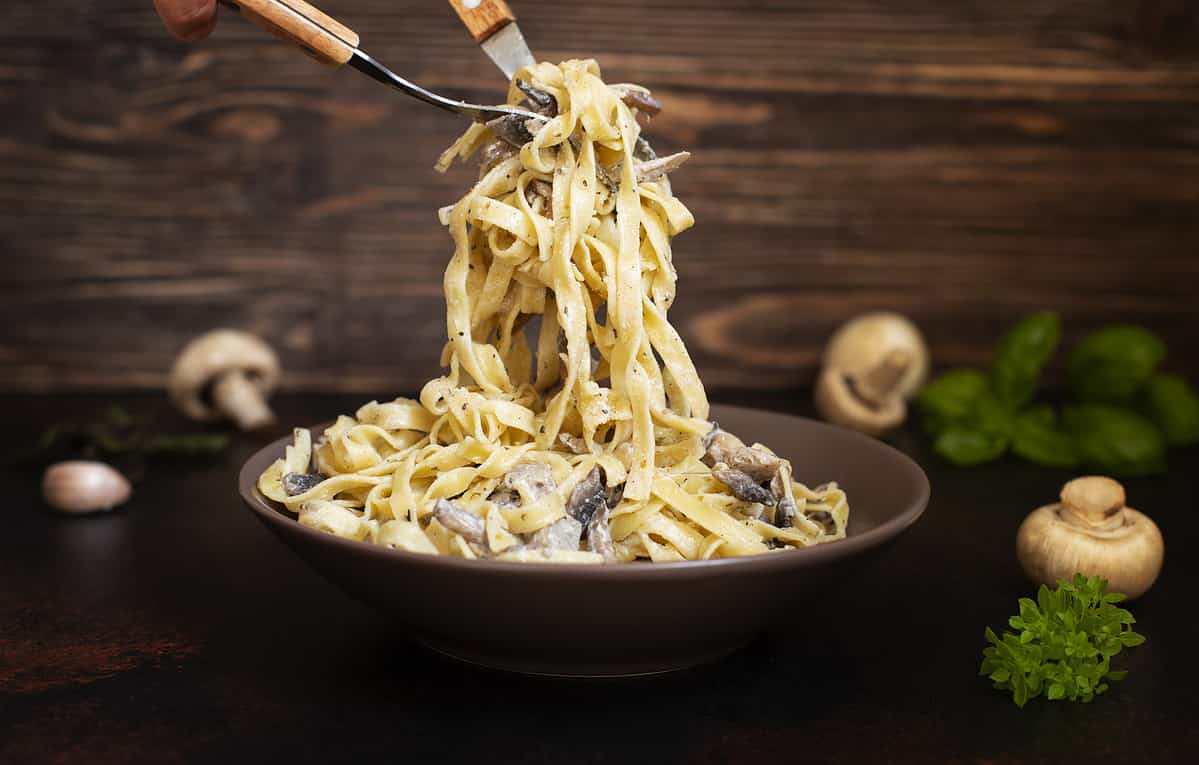
This fettuccine dish uses a cheese sauce and mushrooms to form a delicious, creamy combination.
©iStock.com/Mladenovic
How To Cook Fettucine
If you're hoping to make fettuccine from scratch, stock up on your eggs. This recipe calls for five eggs! Crack the yolks into a mountain (about four cups) of wheat flour, and combine until it looks like dough. Refrigerate your dough and once it's ready, roll it out into sheets and cut your fettuccine into the desired width (via Epicurious). Once your fresh pasta is dried, boil in water until al dente (still slightly firm), so that it's not overcooked, and add your steaming sauce, veggies, protein, etc. to the mix. You can also use pre-packed fettuccine pasta and simply add it to boiling water for a less intensive cooking process.
Popular Variations
While Fettuccine Alfredo may be the most popular dish that uses this great pasta base, there are many variations to try out. Try your fettuccine with prosciutto, shrimp, or sausage. Since it's a heartier pasta, you can combine it with thicker sauces, like meat sauce or cream sauce, pesto, and more! Lots of recipes will combine a fresh vegetable with a heavy sauce, like broccoli and cream sauce or artichoke and blue cheese (via Taste of Home Magazine). There are simply so many ways to try out fettuccine pasta!
What is Linguine?
Linguine is another type of flat, wheat-based pasta. It is narrower than fettuccine and doesn't use egg in the batter. The lightness of the noodles pairs well with clams and mussels, with simple sauces, and, of course, a little bit of cheese. Let's learn more about this delicate pasta type.
History and Origin
The origins of the pasta shape linguine are traced to Genoa, Nothern Italy, in the 1700s. “Trenette” pasta, which is another name for linguine was mentioned in a Ligurian dish that combined pesto and green beans, topped with potatoes. The fact that linguine is commonly served with seafood may be an homage to its coastal roots and one of the most famous linguine dishes is called pesto alla Genovese (via Pastini).
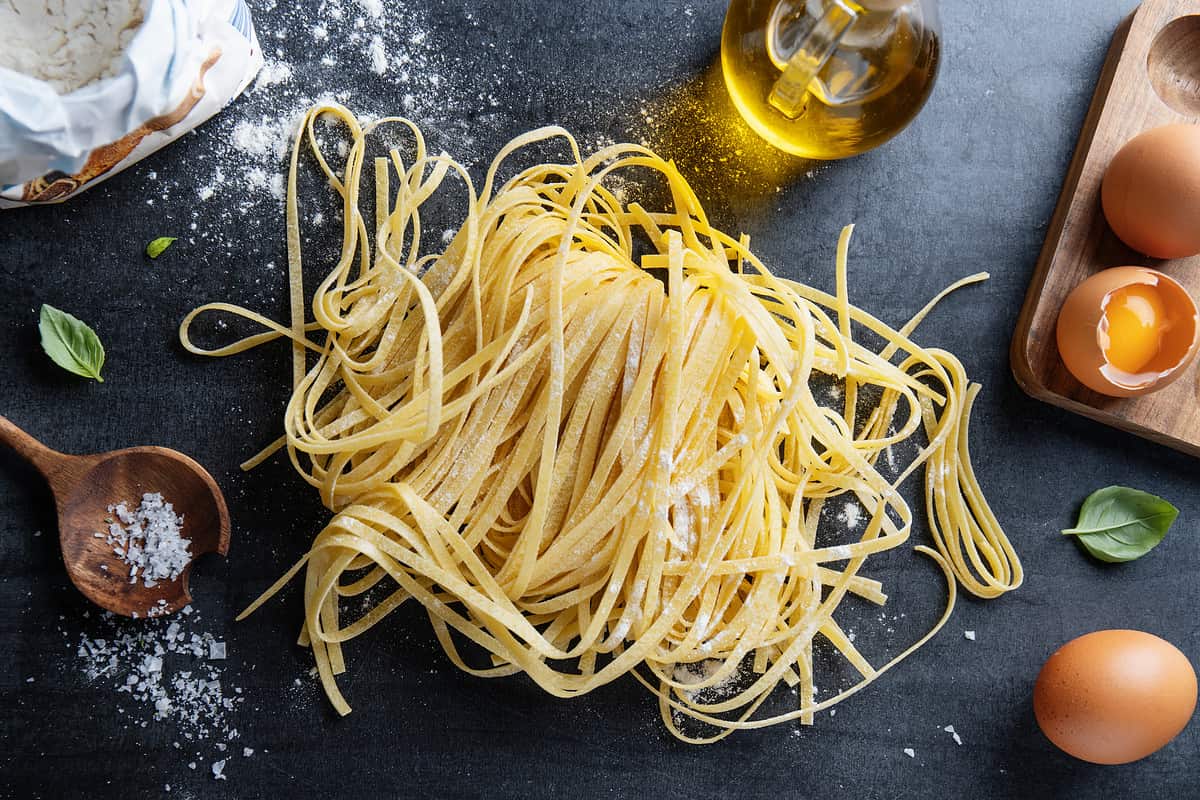
Dried linguine noodles can be cooked right in boiling water, just like pre-packaged store-bought pasta.
©iStock.com/nerudol
How To Make Linguine
Linguine does not always use eggs in the flour batter. Combine your wheat flour with water and knead until a dough is formed. Some forms of fresh linguine pasta will use eggs, so if this is a consideration, make sure that you check the packaging for a dry pasta type that doesn't use eggs in the batter. As for the cooking process, add your fresh or dried noodles to water, and cook until al dente so they don't become overly gloopy. Drain your linguine and toss it into whatever linguine dish your heart desires!
Popular Variations
The most common variations of linguine involve seafood and/or a pesto-based sauce. Linguine with clams in a white wine sauce, or with anchovies and a squid ink base are some of the more decadent variations of the pasta noodle base (via Bon Appétit). It can be combined with fresh veggies, and eaten cold or hot. Overall, linguine pairs best with lighter sauces than its fettuccine pasta cousin.
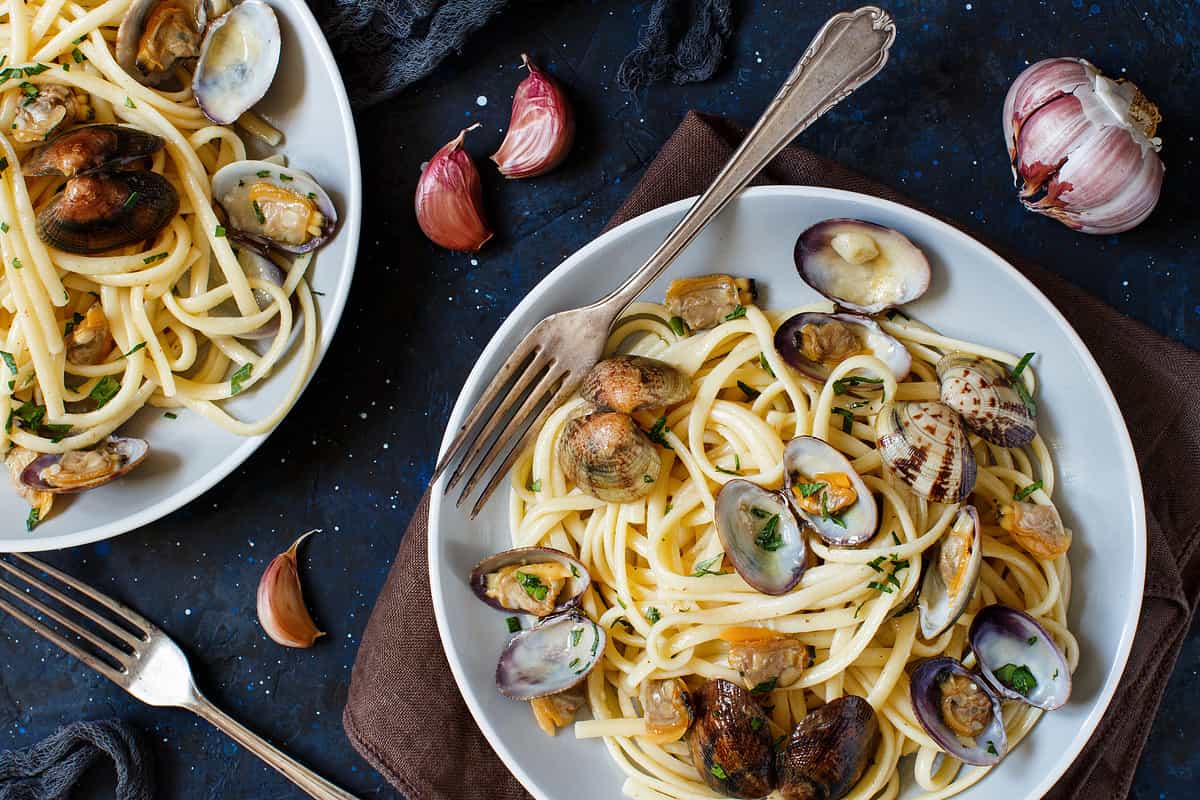
Linguine and seafood are common pairings. Add a light lemon and garlic sauce and you've got a delicious dinner ahead.
©iStock.com/Karisssa
Nutritional Value of Fettuccine vs. Linguine: Calories, Carbs, and Vitamins
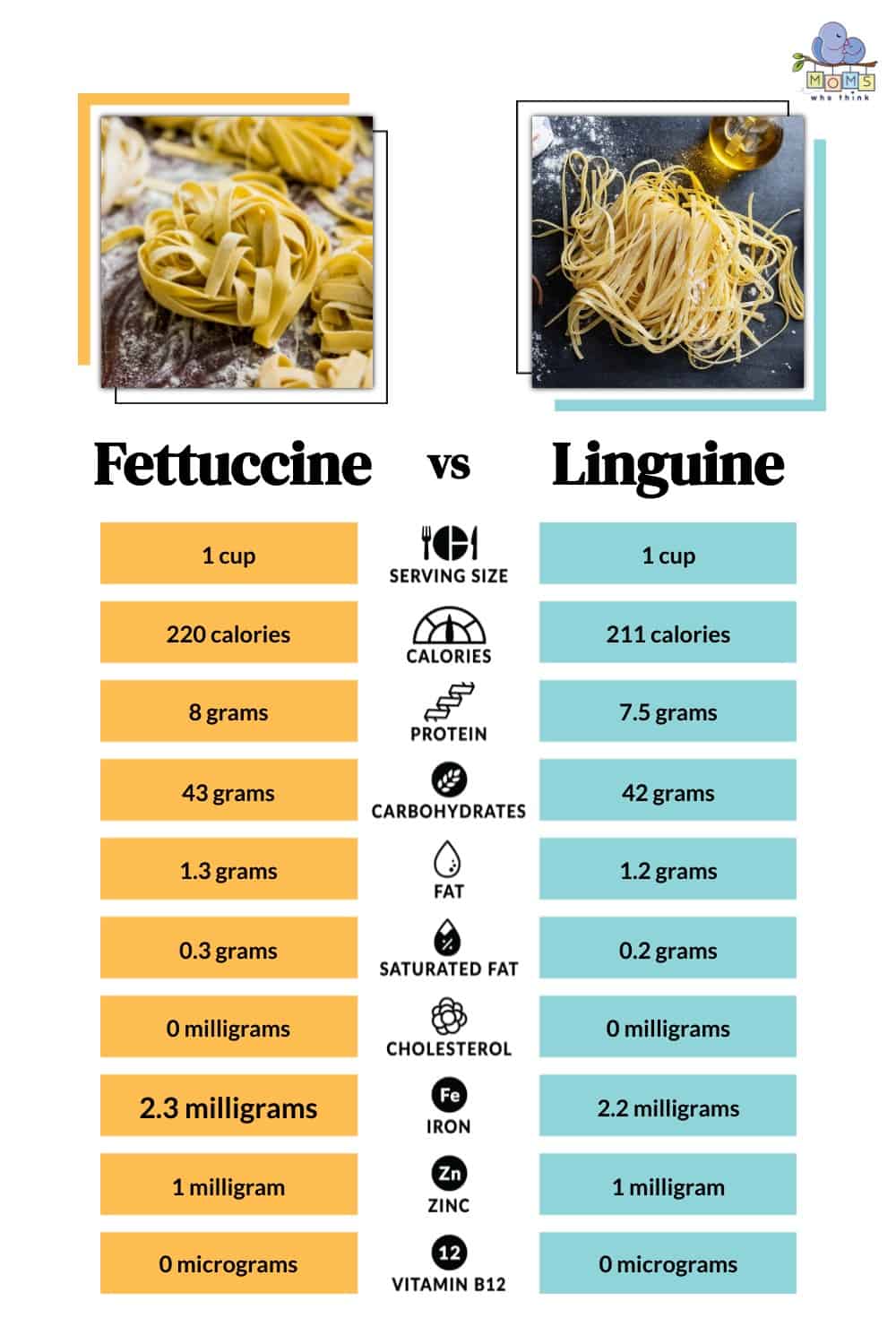
Caloric value of fettuccine and linguine – may differ slightly from the values below which are for Barilla Pasta
©
According to Barilla, the nutritional value of both fettuccine and linguine pasta types is actually quite similar. For 2 ounces of each pasta, there are around 200 calories, 1 gram of total fat, 42 grams of carbohydrates, 3 grams of dietary fiber, 1 gram of sugar, and 7 grams of protein. Nutrients and minerals in these pastas include vitamins A, C, and D, as well as calcium, iron, riboflavin thiamin, folate, and niacin.
Possible Alternatives To Fettuccine And/Or Linguine Noodles
If wheat flour is a dietary concern, try non-wheat flour kinds of pasta. There's lentil and chickpea, whole-grain and tapioca. There are also fresh and dried vegetable pasta types that can make a great alternative to flour-based noodles. Zucchini noodles, dried squash noodles, and carrot noodles can all be substituted for certain noodle dishes. Just do some research and find what works best for you!
Are Fettuccine and Linguine Noodles Noodles The Same Thing?
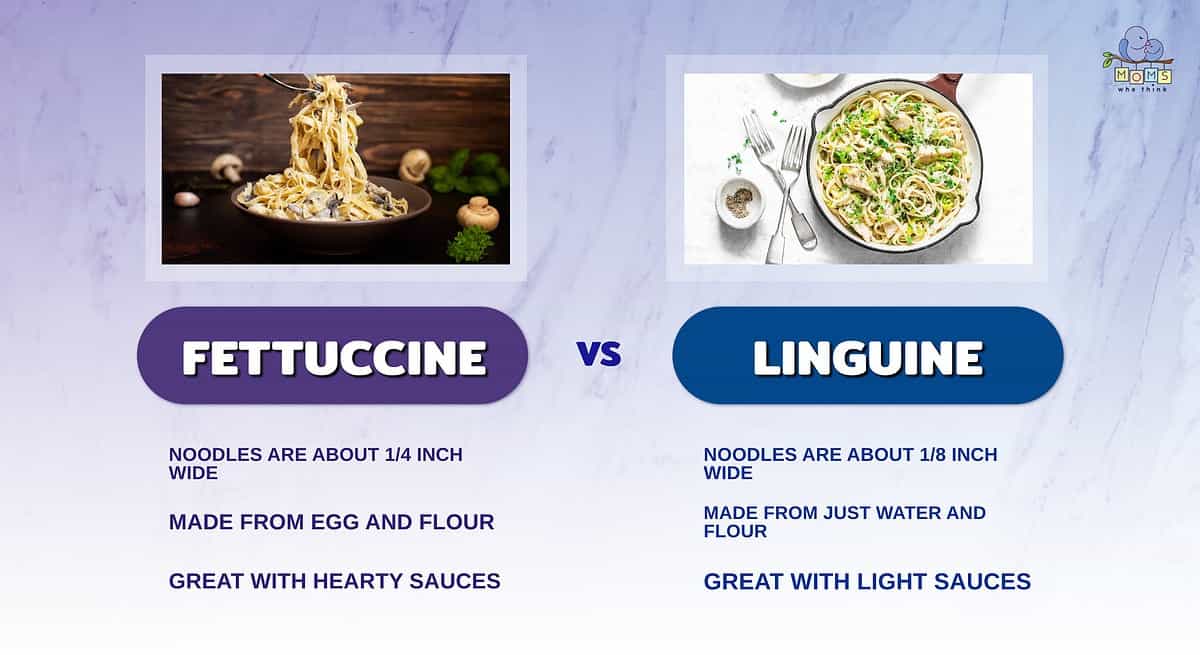
- Fettuccine noodles are roughly 1/4 inch wide, making them thicker than linguine. Linguine noodles are only 1/8 inch wide.
- Linguine is typically made from just water and flour, while fettuccine is made with eggs and flour.
- Given fettuccine's heartiness and thicker noodle, it does great with thicker sauces like Alfredo. Linguine is best when paired with light sauces.
Overall, when considering fettuccine vs. linguine noodles, it is clear they are not the same thing. They can be used interchangeably but for heartier, heavier dishes, fettuccine is the better option due to the density of the noodles. Linguine is best for lighter dishes and blends beautifully with seafood and cream sauces as a base for savory flavors. The fact is, both these noodles are delicious, and that is their biggest shared quality. Which one will you use in your next noodle-based dinner dish?
Looking for a great fettuccine recipe? Check out this creamy basil shrimp fettuccine:
Print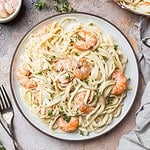
Creamy Basil Shrimp Fettuccine
- Yield: 4 servings
Ingredients
8 ounces uncooked fettuccine
¼ cup chopped onion
2 garlic cloves, minced
2 Tablespoons olive oil
¼ cup all-purpose flour
1 can (12 ounces) fat free evaporated milk
1 teaspoon salt
¼ teaspoon white pepper
⅛ teaspoon cayenne pepper
1 pound uncooked shrimp, peeled and deveined
2 Tablespoons minced fresh basil or 2 teaspoons dried basil
Instructions
1. Cook fettuccine according to package directions.
2. While fettuccine is cooking, sauté the onion and garlic in oil in a nonstick frying pan, until tender.
3. In a small bowl, whisk together the flour and evaporated milk until smooth.
4. Add the flour mixture to the frying pan, stirring well. Stir in the salt, white pepper and cayenne pepper.
5. Bring to a boil; cook and stir for 2 minutes or until thickened.
6. Reduce heat. Stir in shrimp and basil.
7. Simmer, uncovered, for 4 minutes or until shrimp turn pink.
8. Drain the fettuccine and place in a large bowl. Add the shrimp mixture and toss to coat.
Nutrition
- Serving Size: 2½ cups
- Calories: 439
- Sodium: 695mg
- Fat: 10g
- Saturated Fat: 1.5g
- Carbohydrates: 49g
- Fiber: 3g
- Protein: 36g
- Cholesterol: 172mg
The image featured at the top of this post is ©Kiian Oksana/Shutterstock.com
